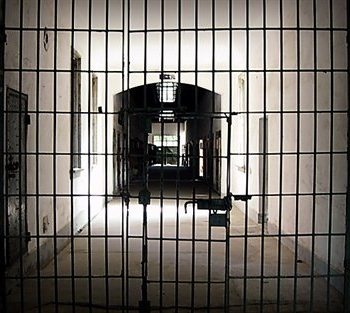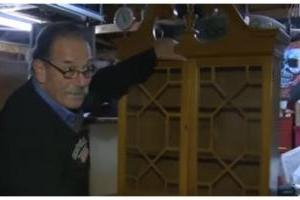The colony is easy to recognize: gloomy, with rusted towers, surrounded by barbed wire, parade ground, metal walls with bars. “Zone” - this is the name of correctional colonies, where their harsh and cruel world reigns, where their own laws and rules are respected.
The concept of a maximum security colony. Who is contained in them
The maximum security colony is one of the most strict closed-type correctional institutions, where people who are most socially dangerous for citizens and society as a whole, and therefore need strict isolation, serve their sentences on the basis of a court sentence. Such especially dangerous citizens, as a rule, get there for committing grave or especially grave intentional crimes, for example, the intentional killing of two or more persons, contract killings, and especially dangerous relapse. The conditions of detention in such a correctional institution as a strict-regime colony are rather harsh and severe, which is manifested in a large number of restrictions and complete isolation.

Prisoner conditions and procedures
Naturally, one colony will be completely different from another. For prisoners, this institution is like a small state with its "president", its own rules, regulations and principles. A lot depends on the contingent that is located there (both on the convicts themselves and on administrative workers). But nevertheless, any colony of strict regime, the conditions of detention of prisoners in it - all this is clearly regulated by certain regulatory acts, first of all, by the Criminal Correction Code, as well as the procedures for providing visits, receiving transfers from relatives and other organizational requirements. In addition, the maximum security penal colony is characterized by the fact that in addition to the special contingent serving their sentences, such institutions also limit the number of transfers for convicts. So, a person serving a sentence in a given correctional institution has the right to receive only four parcels and four parcels per year. The restrictions apply to the number of visits per year: the prisoner has the right to three long and three short-term visits. If the convicted person works, then he has the right to spend on goods or foodstuffs (at his discretion) an amount that does not exceed two minimum wages.

The internal structure of the colony
The maximum security penal colony is divided into a residential area and production facilities. In turn, the residential area may contain several local ones: a canteen, a library, a medical unit with an infirmary, a bathhouse, as well as a headquarters where administrative offices are located. Convicts are held in locked cells, which are designed for 30-50 people. There are beds in two or three tiers, one square meter has a standard of 7 m², which, however, is often violated. On the territory of the colony there is necessarily a small platform for walking in the fresh air, as well as a room for disciplinary punishment or a punishment cell (ShIZO), where prisoners are placed for violation of order.

Features of detention in colonies of women
As a rule, the word “prisoner” or “convict” is associated with a middle-aged man with a gruff voice, speaking obscene speech, who has several previous convictions, usually “for a hooligan” or “drug”.But more and more often the concept of “convicted person” is attributed to girls, women, whose genetic level is to be a mother. However, this does not stop them from committing terrible crimes. So, the most common crimes among the fair half of humanity are the sale, possession, manufacture of narcotic substances, unintentional murder, hooliganism.
For the very same reasons as for men, namely for committing grave, especially grave crimes, the court can pronounce a woman a sentence with serving a sentence in a maximum security penal colony for women, which differs little from a male one. Conditions for staying in such a colony are created without taking into account the physiological, psychological and other characteristics of the female body. In such an institution, a woman, as a rule, without moral and financial support loses social adaptation, that is, there is almost no possibility to adapt to life in the wild.
For a woman, imprisonment is much more painful than for a man. This is due to the remoteness from home, relatives, husband, children, lack of sanitary and hygienic conditions, psychological difficulties of serving a sentence (lack of personal belongings, uniform uniform, walking in formation). The women's penal colony is subject to the same regime requirements: the same number of permissible parcels and dates, labor on any type of work is possible, the same disciplinary punishments, up to serving them in the punishment cell. It should be noted that men, like women, after spending an average of three to five years in a colony, get used to prison life, therefore, often after going to freedom they go back to prison. Although the above does not mean at all that the women who visited the colony are, of course, “scum of society,” among them gifted, talented craftswomen, and artists are often found.
The need to reform the penal system
From the foregoing, the conclusion suggests itself that it is necessary to carry out reforms in the penal system with regard to sex, the need for social adaptation and the ability to solve the simplest everyday problems.









